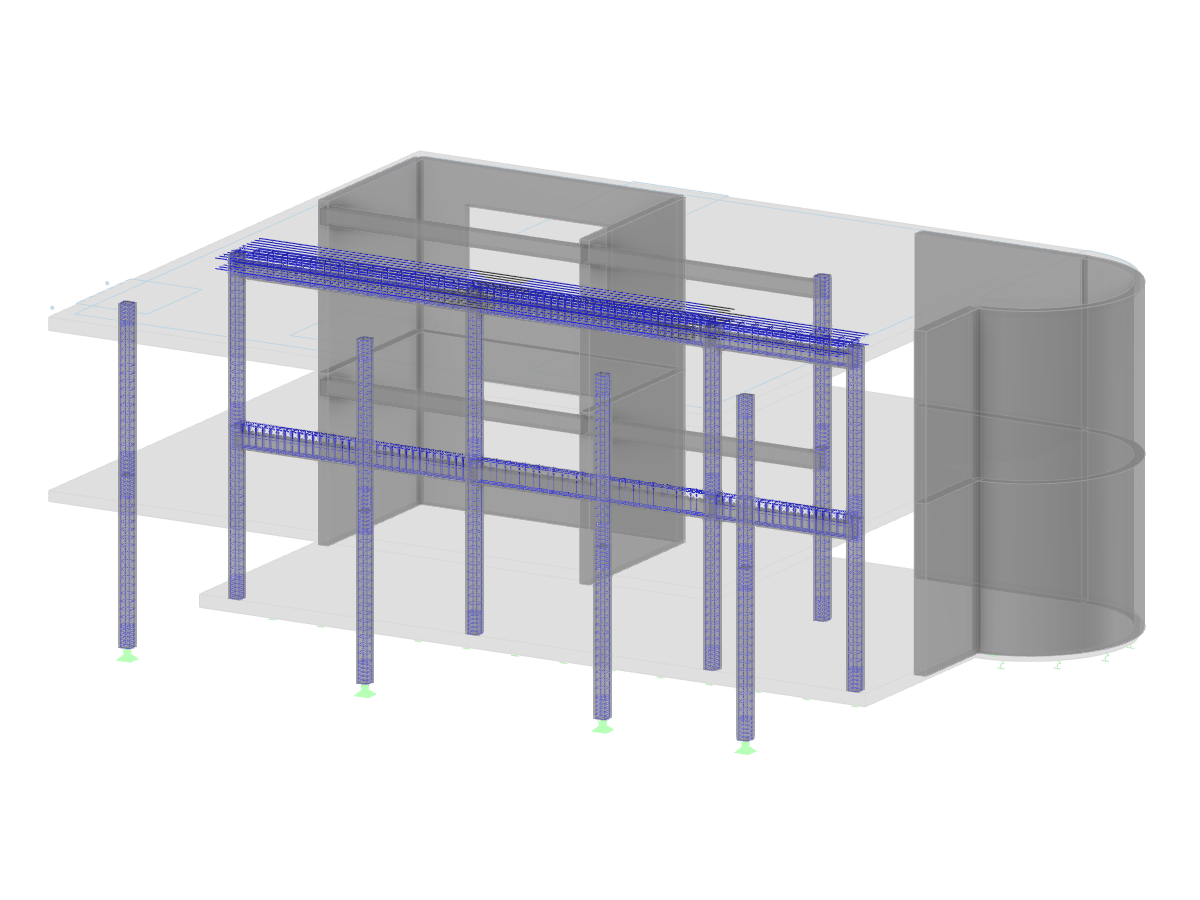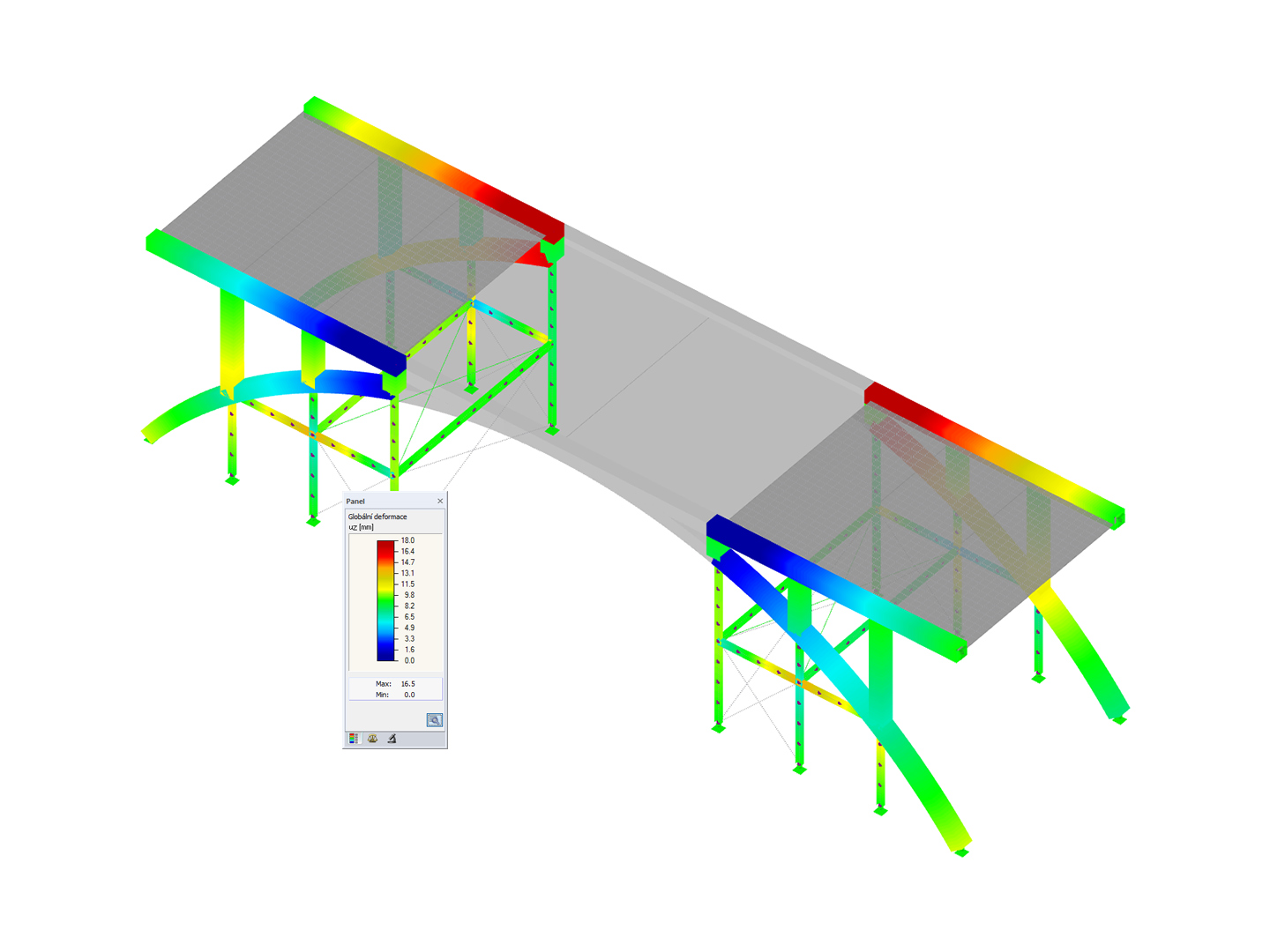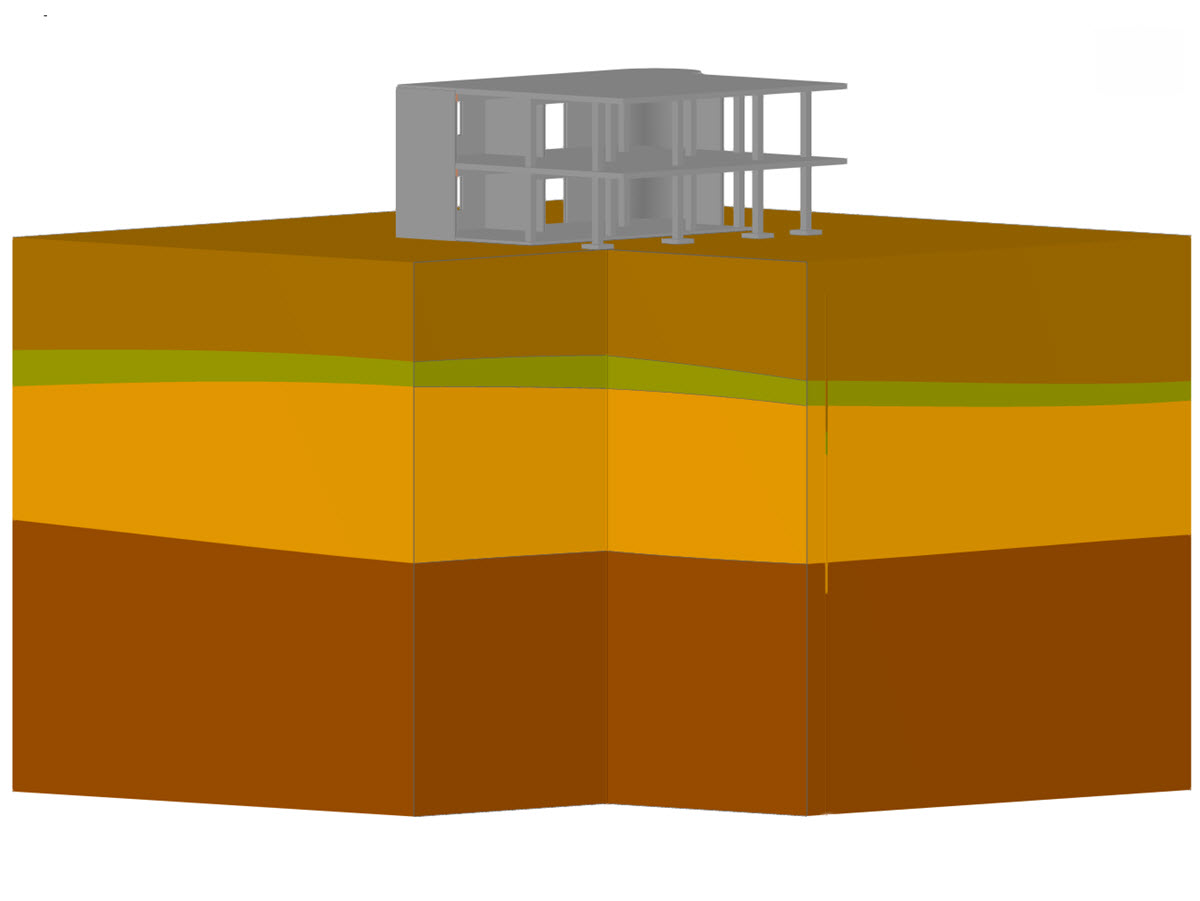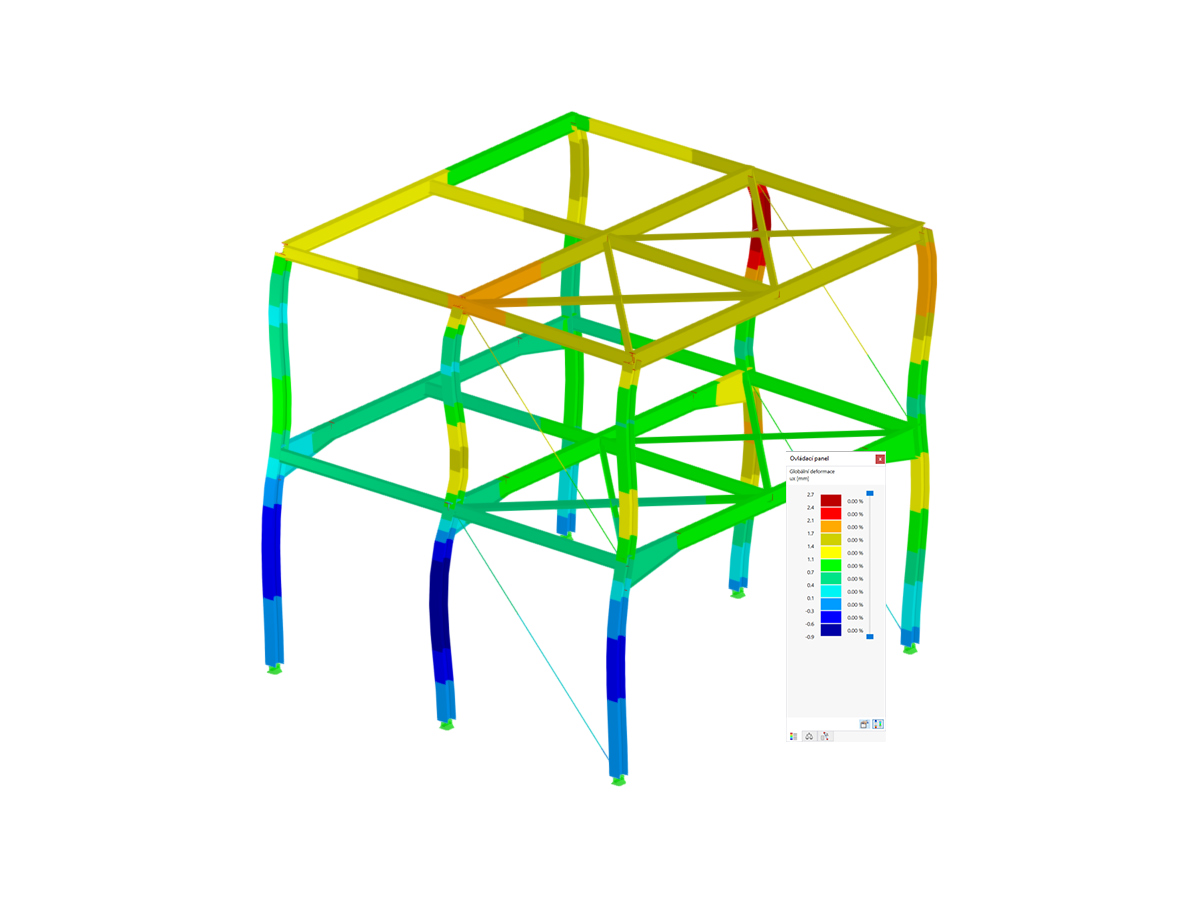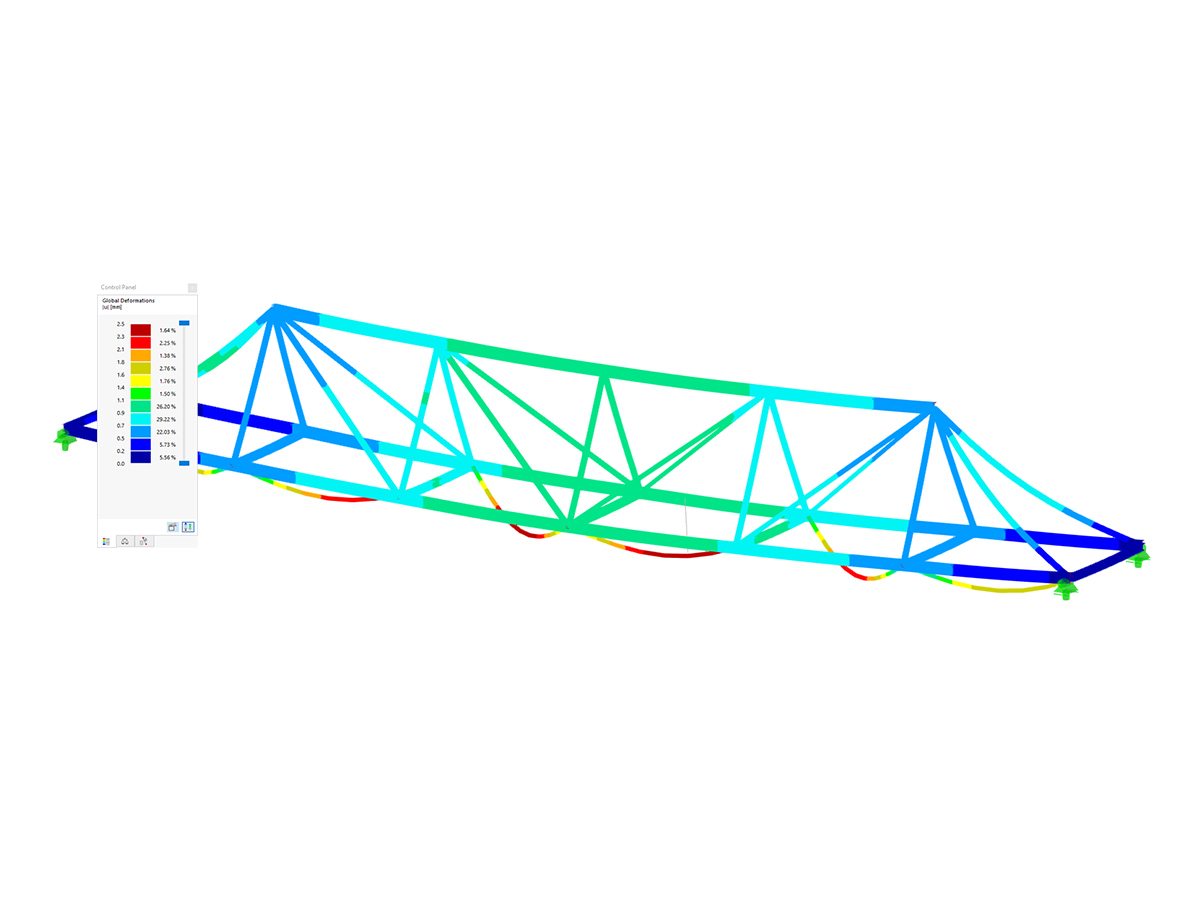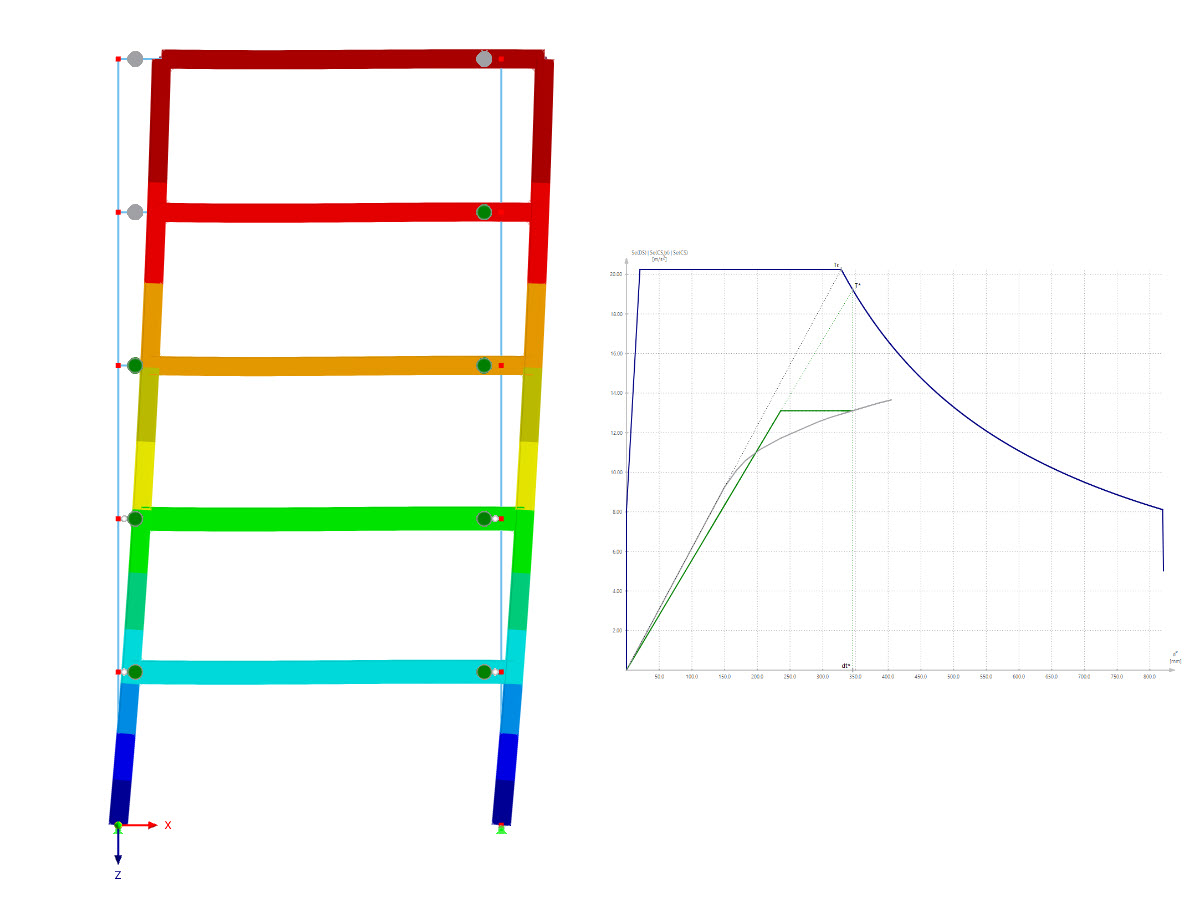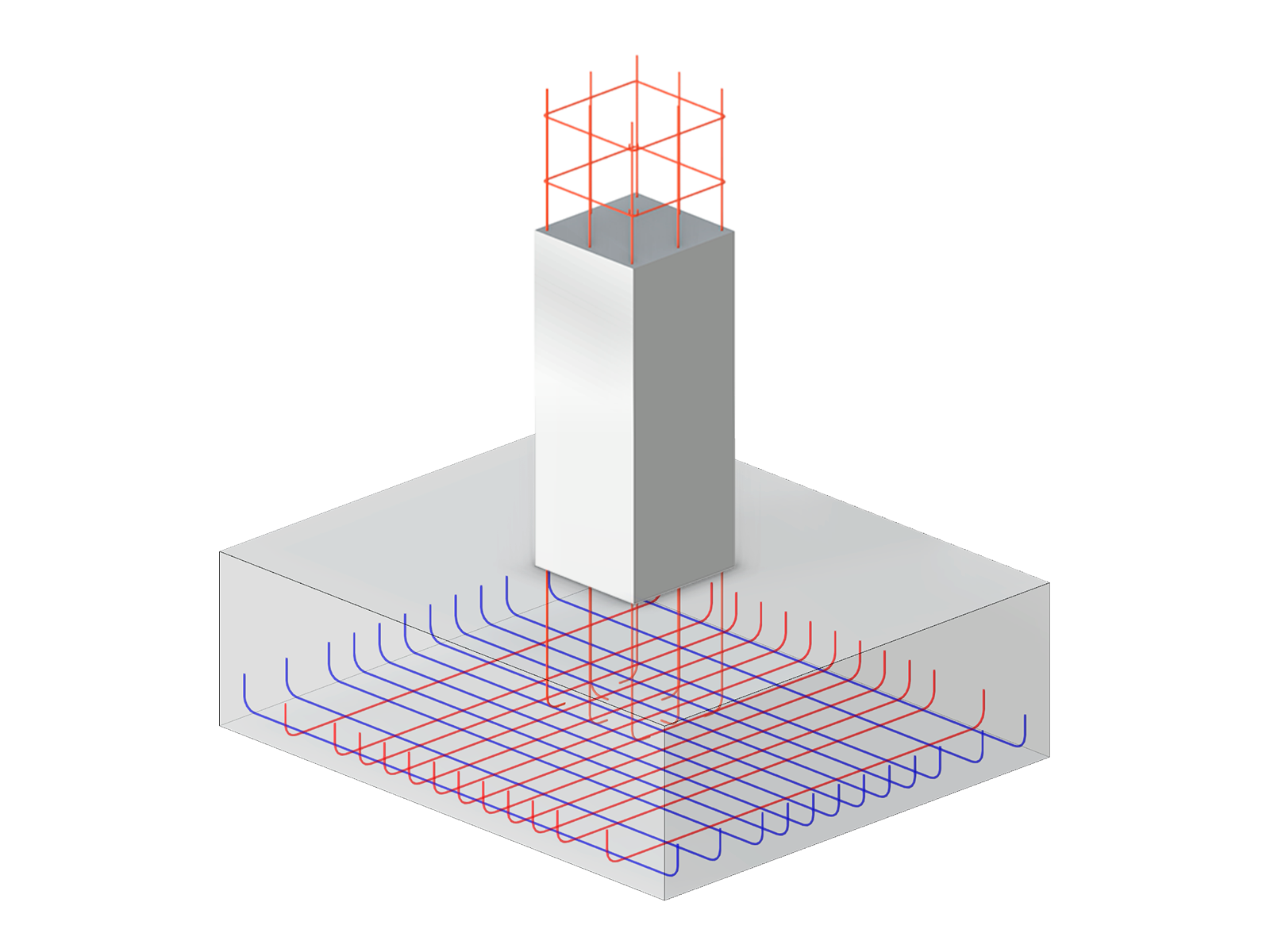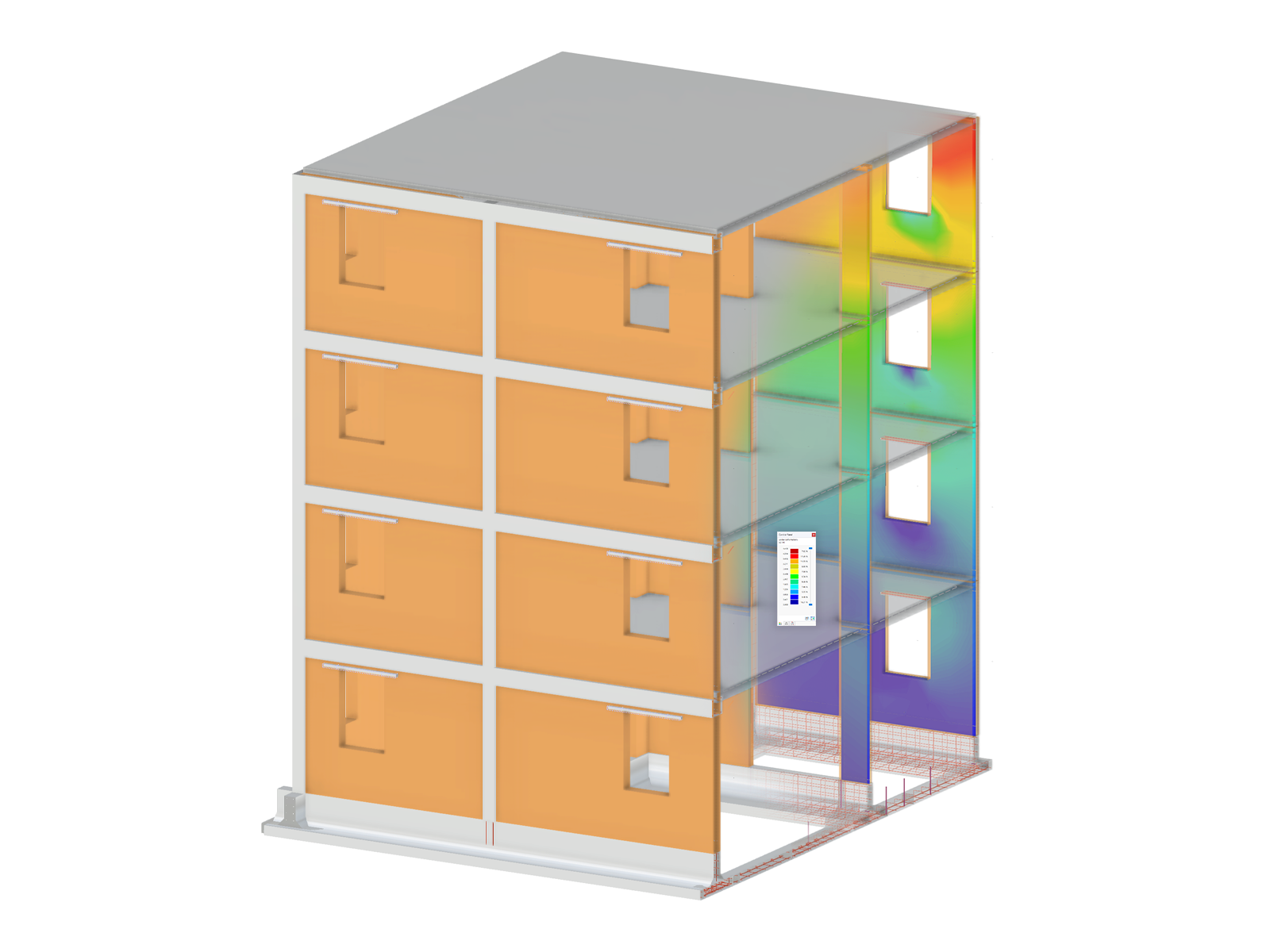- Free definition of two or three reinforcement layers in the ultimate limit state
- Vectorial representation of the main stress directions of internal forces allowing optimal orientation adjustment of the third reinforcement layer to the actions
- Design alternatives to avoid compression or shear reinforcement
- Design of surfaces as deep beams (theory of membranes)
- Option to define basic reinforcements for top and bottom reinforcement layers
- Definition of designed reinforcement for serviceability limit state design
- Result output in points of any selected grid
- Optional extension of the module with nonlinear deformation analysis. The calculation is performed in RF‑CONCRETE Deflect by reducing the stiffness according to the standard, or in RF‑CONCRETE NL by the general nonlinear calculation determining the stiffness reduction in an iterative process.
- Design with design moments at column edges
- Precise breakdown of reasons for failed design
- Design details of all design locations for better traceability of reinforcement determination
- Export of isolines for the longitudinal reinforcement in a DXF file for further use in CAD programs as a basis for reinforcement drawings
Features of RF-CONCRETE Surfaces


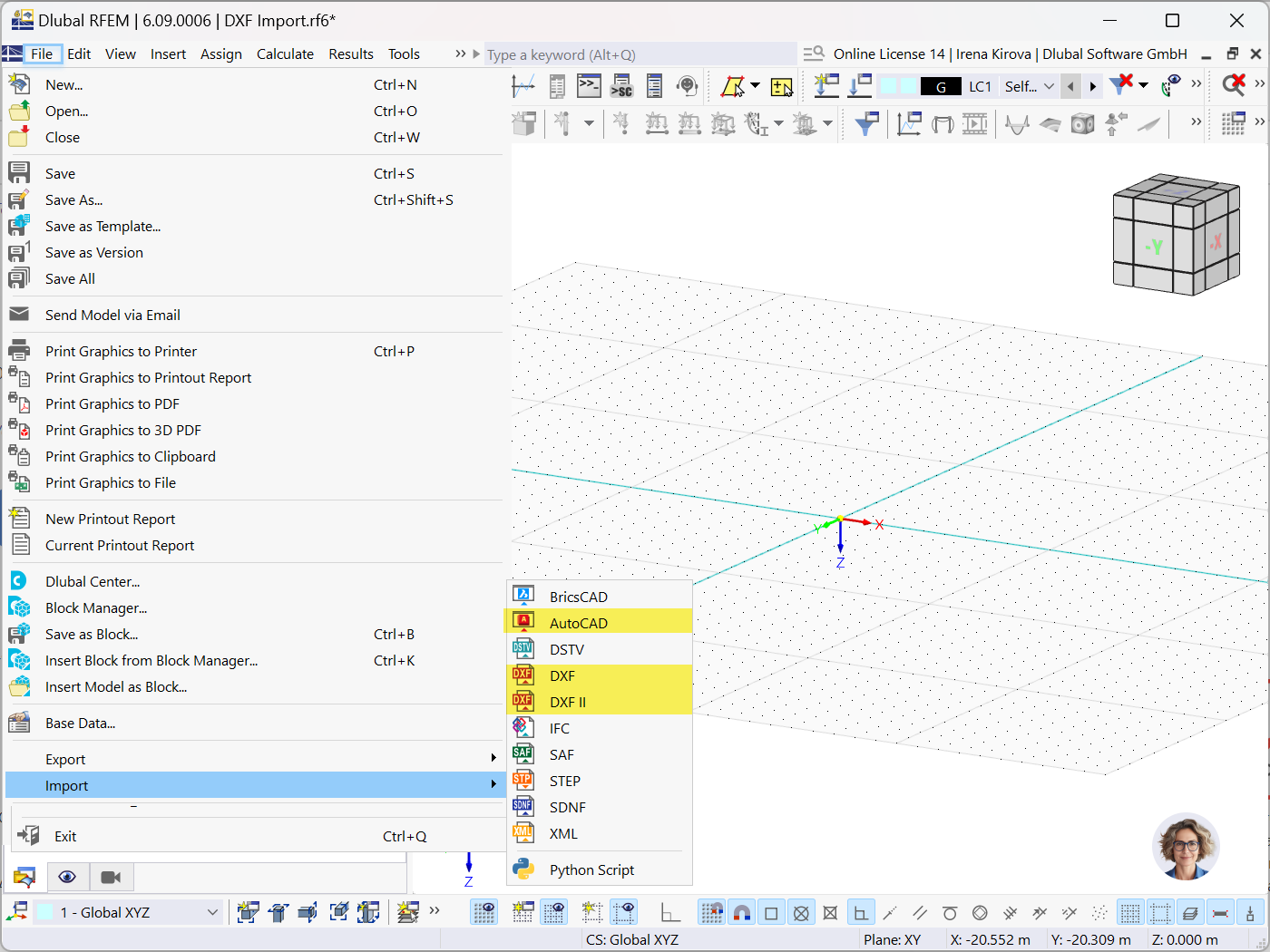


In the Snow Load Wizard, you can optionally consider snow overhang and snow guard when generating snow loads according to Eurocode.

In the wind simulation, it is possible to consider member coatings (for example, from ice loads).

If you activate the "Link to Nearby Objects…" option for nodes, RFEM or RSTAB automatically searches for neighboring objects. A link in the form of a rigid member is then created for these members, nodes, or surfaces.
You can specify various settings for searching for nearby objects. Including search area, object types to be searched for, and objects to be excluded. Furthermore, you can specify member hinges for the created connecting member.
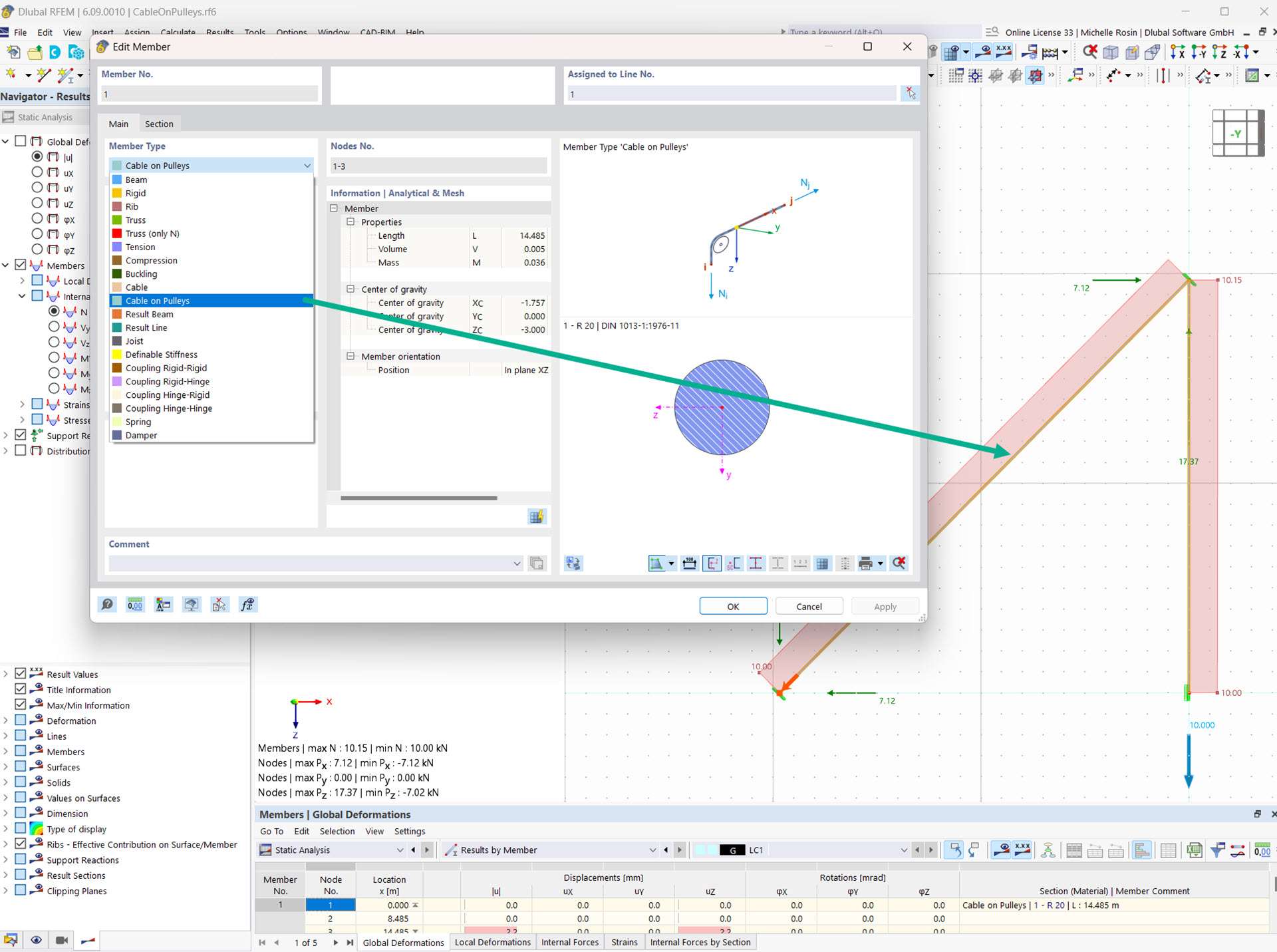
The Cable on Pulleys member type allows you to simulate a cable system deflected by pulleys.
This member type only absorbs tensile forces and can only be displaced in the longitudinal direction. It is suitable for flexible tension elements whose longitudinal forces are transferred through the model via deflection points (for example, a pulley).
How can I find out which graphics card is actually used by RFEM 6?
I'm experiencing problems with the graphics card. What can I do?
Can I use the Dlubal API in Rhino and Grasshopper?
Can I optimize parametric cross-sections?
How can I convert a member set or several members into a single member again?
How does single sign-on work with RFEM 6?
















































-querkraft-hertha-hurnaus.jpg?mw=350&hash=3306957537863c7a7dc17160e2ced5806b35a7fb)






